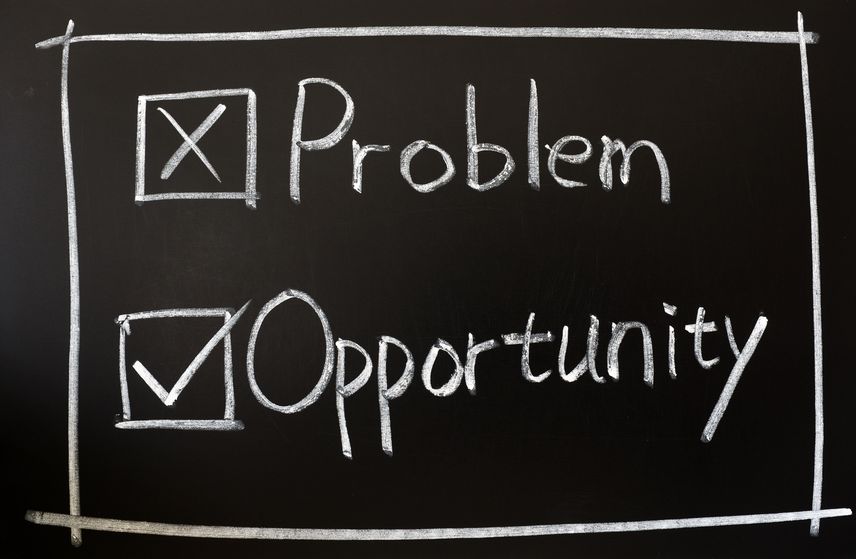A lot is the same…
As I approach the end of my month in Australia, I have found a lot of similarities in the challenges faced by people using the justice systems in New South Wales (NSW) and Victoria – the two most populated states with the largest legal professions in Australia – to those familiar to us in North America. Including:
- Growing numbers of self-represented litigants in family and civil courts
- Limited systems for collecting data about SRLs, and their impact on the justice system and the delivery of legal services
- Reluctance among lawyers to embrace unbundled legal services, often justified by the same (ungrounded) arguments we hear in North America (“our clients don’t understand limited scope retainers, they would all sue us”)
- The continued professional monopoly of the Bar, reinforced by continued murkiness about what constitutes legal services (as one Australian blogger, Justinian, put it: “Lawyers and lawyering” is defined to mean whatever you want it to mean…. It doesn’t matter, as long as lawyers have a monopoly on whatever it is they do.”)
- An increasingly overburdened “third sector” of community agencies such as the Community Legal Centres trying to assist those who cannot afford legal counsel (and like Canada, the US, and the UK, this is most of the population)
…but some things are different
I have also come across some interesting and important innovations that have implications for SRLs, and for the way justice system services are delivered to the public. Here is a short summary of three such innovations, that have the potential to make a distinctly “Aussie-A2J” contribution.
- Co-regulation of the legal profession in New South Wales and Victoria by the Law Societies and government
A 1993 report by the New South Wales Law Commission – “Scrutiny of the Legal Profession – Complaints Against Lawyers” concluded that the complaints system administered and controlled by the Law Society of New South Wales “…did not serve the needs of complainants, the practising profession, or the community at large.”
In response, the New South Wales government removed the exclusive right to oversight of their members from the Law Society of NSW, and created the Office of the Legal Services Commissioner (OLSC). A similar body – the Legal Services Board – was created for the state of Victoria in 2005.
How does the new complaints process work? Complaints from the public about lawyers in NSW and Victoria now go directly to the government bodies, not to the law societies. The OLSC received about 8,000 complaints – mostly about conduct, communication and billing issues – last year, and about 2,000 were formally submitted and investigated. There is a special mediation process for dealing with costs complaints . A small percentage of cases are still sent to the Law Society for resolution (that’s the “co” part, and it’s contentious).
Does a government agency do a better job of making the legal profession accountable than the profession itself?
Taking oversight responsibility away from the profession is an important step. One insider told me: “Having the OLSC as co-regulator allows people to trust the system more. It’s no longer Dracula guarding the gate to the blood bank. Having an organization truly dedicated to dealing with complaints is better for consumers overall and prevents inefficiency. The staff at OLSC are genuinely concerned with the issues, and are ensuring the profession upholds its standards.”
On the other hand, the Legal Services Commission, as well as its counterpart in Victoria, is clearly underfunded and understaffed. As the number of complaints grows each year, the lack of resources to manage them properly will become increasingly problematic.
- Efforts to make legal costs more transparent
The Uniform Legal Profession Act 2015 legislates on the question of legal costs disclosure. It requires lawyers in these states to give their clients a written estimate of total legal costs at the time that initial instructions are taken; to complete a “costs disclosures form” for cases in which they estimate costs at more than $3000; to charge no more than fair and reasonable costs and not to act in a way that unnecessarily results in delay and increases costs; and to inform the client when there is a significant change in estimated legal costs.
Will these provisions lead to greater costs transparency and more empowered clients? Compliance with these new rules may be rudimentary, or it could be transformative. Time will tell. But the principle is now established that the Bars of NSW and Victoria are subject to legislative requirements regarding their billing practices – furthermore alleged breaches will be investigated by a government body, rather than the profession itself (above).
- Model Litigant Rules – the fair and honest use of legal proceedings
The Australian federal government has adopted Model Litigant Rules for all government parties (government departments, agencies and corporations) in litigation.
The Model Litigant Rules require that when the government is a party to a lawsuit, they must (among other obligations):
- Pay claims they know are legitimate without litigation
- Avoid protracting a dispute and attempt to make settlement wherever possible
- Where litigation is necessary, not force a claimant to prove a matter they already know to be true
- When the only dispute is over the amount of compensation or quantum, not argue over liability
- When a claimant is without resources, not use this to force them to drop their claim by engaging in costly litigation.
The reasoning behind the Model Litigant Rules is that the only interest that a government party should have in litigation is the public interest – it should not therefore adopt the adversarial tactics of a private party. This principle was originally established in relation to criminal proceedings brought by the Crown, and extended to civil cases in a 1996 decision (Morley & Ors v Australian Securities and Investments Commission ((1996) 139 ALR 595).
Complaints about breaches of the Model Litigant Rules – brought by members of the public, media sources, and via self-reporting by government agencies contracting with private legal service providers – go to the federal Office of Legal Services Coordination. Usage has been rising steadily as public awareness of the Model Litigant Rules grows. In 2011/12, 110 complaints were brought, of which 40 were upheld after investigation (for more information, see www.ruleoflaw.org.au).
On the downside, there is similar concern about underfunding and understaffing as I described above in relation to the NSW and Victoria co-regulation scheme. As one politician succinctly put it, “…model litigant rules will become meaningless without adequate means to enforce them.” (Senator Nick Baulkus, Hansard March 8th 1999).
Nonetheless, the concept of Model Litigant Rules – and especially the tantalizing idea that in a perfect world they might be extended to all legal practitioners acting on behalf of private clients – has the potential to change the way that litigation is conducted, including the experience of working with opposing counsel for SRLs.
Could Model Litigant Rules – let’s call them Model Litigation Rules if we could apply them to all litigation parties – have any future in North America?












It would do good for the Alberta government to adopt the model Litigant Rule. The Attorney General here loves to fight people over nothing. Recently they came to court fighting me over setting the date of the hearing which could be no sooner than six months and then attempted to get cost for that.What is more it is my right as mover of the action to set the date. The judge let me know what I say matters not and told the Ag little fellow to go set the date
As if that was not bad enough the AG came to court and totally misled the judge by use of a catalogue of lies notwithstanding that it is the judge’s responsibility to know for herself. She eventually gave this silly ruling. They were not clear enough in what they asked me for but I am smart and intelligent and should use those to figure out what they wanted me to give to them. The fact is she is the one who has no clue what is going on. She even admitted that she and the AG find the Act in question hard to read. I found it plain, straight and simple
The case involved an independent government agency and that lawyer decided to say nothing-take no position so the AG who has no instruction from them just decided to take a position for them despite their lawyer being present but decided to say nothing and further the AG’s written submission said they take no position for the said . I am writing to the legislature again and raise hell. Guess what caused the dispute? My welfare cheque.So I had to face a gang, paid by taxpayers to protect people’s right but they ganged up to rob me of my welfare cheque. They rob the indigent. It does not get worse than that
They better know they will not get my welfare cheque so easily and the better be able to read of they want to fight me over it
All efforts to improve access to justice for SRLs are in vain if crookedness and incompetence remain so prevalent in our courtrooms.
Hi Julie. An update on the LSC – in the “Access to Justice” Federal Inquiry held earlier this year by the Productivity Commission, (see page 10 and 45 of their report) the Commission recommends that complaints against lawyers should be treated as a “consumer law” issue. This would of course do away with the need for the costly Legal Services Commission. Also what I and others found stunning after making a complaint is that I was told, despite my case being a public interest matter and the lawyer involved clearly had a serious conflict of interest, withheld vital evidence from the Court such as evidence of strong motive, and generally sabotaged witnesses etc., was that the Courts as well as the Commission are mostly on the side of the lawyers and protecting their income! So it can be seen that they do not need more funding – they need abolishing! What also works against complainants like myself where the government is largely at fault (e.g. outmoded laws updated in other Australian States but not in Victoria) is that the Attorney General has two close relatives in the Commission. As well, many larger law firms act for the government and its various departments so they too have a conflict of interest. With an Ombudsman with the same attitude (ie support the rich wrong doers not the ones being trampled underfoot by injustice) you can see that the chances of justice in Victoria are nil. I believe there is a very similar situation in Canada – ie that the “watchdogs” are merely gatekeepers to prevent exposure of big business and of government cover up. The Sandra Olsen case in Canada is a prime example. (NSRLP: edited to remove personal references and clarify references to Australia)
Take it for what it’s worth. But as a lawyer who has sat on many discipline hearings – my own sense is that lawyers tend to be harder on lawyers than our public members. However – in the age of social media and “initial impressions” governing complex decisions, I completely understand how it “appears” odd to the public that lawyers are governing their own conduct. I suspect lawyers would actually be more likely to judge lawyers harshly than non-lawyers – but I understand the optics of that to the public.
Lawyers are – in a very real sense – the thin line between freedom and totalitarianism. We stand up to the state when no one else will. Frankly, our current government (and many other western governments) edge very closely towards a growing global “police state” – and if lawyers are suddenly the pawn of government interests and subject to the sort of “independence” that we’re seeing with the immigration department – I think that actually bodes very poorly for the broader welfare of the citizens.
Maybe I sound like an Alex Jones conspiracy nut – but I think large government and big business is a much larger threat to Canadian welfare than how we currently regulate our legal profession. See the example in the U.K. and Australia where the move away from lawyers regulating lawyers was also immediately accompanied by approval of Alternate Business Structures (large, non-lawyer-owned law firms).
Imagine if, instead of your local law firm, you have your interests protected by Bear Stearns, Lehman Brothers or Enron…
But – I sense that the influence that most easily impacts government (money) will likely get its way – and the way will be paved to reduce “small law” in favor of “big law” or large scale non-lawyer legal delivery (see LegalZoom.com) – which has it’s benefits, but will not likely result in high quality litigation support – it will more likely eventually result in large-scale government administration of quasi-justice (see Workers Compensation).. with easier, cheaper access to at best mediocre standards of “independent (I say that sarcastically) justice”.
To motivate any government – NDP, Liberal, CPC – or more importantly the public, to see the benefit of dramatically increasing funding of justice seems like a pipe-dream.
Like most A2J effort in Canada and elsewhere, with the greatest of respect, Julie – the changes in Australia mirror the trend of nibbling around the edges, without really changing much of anything. I think Canadians need to wake up to the reality that a functioning, accessible, independent justice system is most likely to promote healthy social functioning and social progress – and that there is a price to maintain that. If we want “Walmart” justice, we’re soon going to get “Walmart” justice – and that will have broad social ramifications IMHO which will be profoundly negative.
(Written in a very cynical moment where I imagine that I likely will not vote in this Federal Election).
Thanks for useful and valuable information!